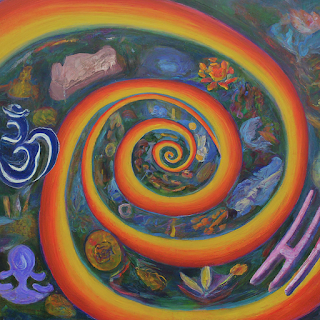Exploring the Paradoxes: Beyond Language with Buddhism, Quantum Mechanics, and Linguistics
In the intriguing intersection of spirituality, science, and linguistics, the works of TJ Suzuki and Heisenberg present a compelling narrative that transcends conventional understanding. They delve into the realms of Buddhism and atomic structure, suggesting that these ancient wisdoms and modern scientific discoveries share a common ground beyond the realm of language.
Buddhism, with its profound teachings on the nature of reality and existence, parallels the complex and often counterintuitive world of quantum mechanics, as observed in the behavior of atoms and subatomic particles. This intersection is not merely a coincidence but a reflection of the universal truths that govern our existence, transcending the boundaries of language and conventional logic.
The dual nature of electromagnetic radiation serves as a perfect metaphor for this convergence. Light exhibits wave-like characteristics when it emanates from two sources, creating an interference pattern that speaks to the interconnectedness of all things, a principle deeply embedded in Buddhist philosophy. Conversely, its particle-like properties, as observed in the photoelectric effect where photons kick out electrons from a metal surface, echo the Buddhist notion of the momentary and discrete nature of reality.
Koans, the enigmatic and paradoxical questions used in Zen Buddhism to transcend rational thought and provoke enlightenment, offer a method to engage with these scientific phenomena on a deeper level. Just as koans challenge the mind to abandon linear thinking and embrace the paradox, the dual nature of light invites us to reconsider our understanding of the physical world. It suggests that reality, at its core, is not bound by the binary constraints of language or the human intellect.
TJ Suzuki and Heisenberg illuminate the idea that both science and spirituality seek to answer the same fundamental questions about the universe and our place within it. Their work draw a parallel between the structure of the atom and the teachings of Buddhism, though seemingly disparate, are interconnected strands of the same fabric of existence. By transcending the limits of language, they offer us a glimpse into the profound unity of all things.
This exploration invites us to consider the ways in which language shapes our understanding of the world and the limits it imposes on our comprehension of the vast, interconnected web of existence. It challenges us to look beyond words and concepts, to embrace the paradoxical nature of reality, and to find harmony in the seeming contradictions of the universe.
As we delve deeper into the mysteries of the universe, both through the lens of science and the wisdom of ancient philosophies, we are reminded of the importance of remaining open to the unknown. The journey beyond language, into the heart of paradox, is not merely an intellectual exercise but a spiritual quest that has the power to transform our perception of the world and our place within it.


Comments
Post a Comment